► BMW’s electric saloon driven
► Sharp handling and quick acceleration
► Head and shoulders above the EQE
BMW has completely changed tack for the latest generation 5 Series. The previous model was available with a broad range of combustion engines, including two torquey yet frugal diesel units. But this new car shuns diesel power entirely, replacing the technology with a pair of pure-electric powertrains that are designed to propel the 5 Series into the modern era. That’s right, the 5 Series is now an electric car.
You can still have the 5 Series with combustion power (for now), but BMW has stripped its range back to just three options. There’s the mild hybrid 520i petrol at the bottom of the pecking order, followed by two plug-in hybrid units. We cover those cars in detail in our G60 5 Series news article.
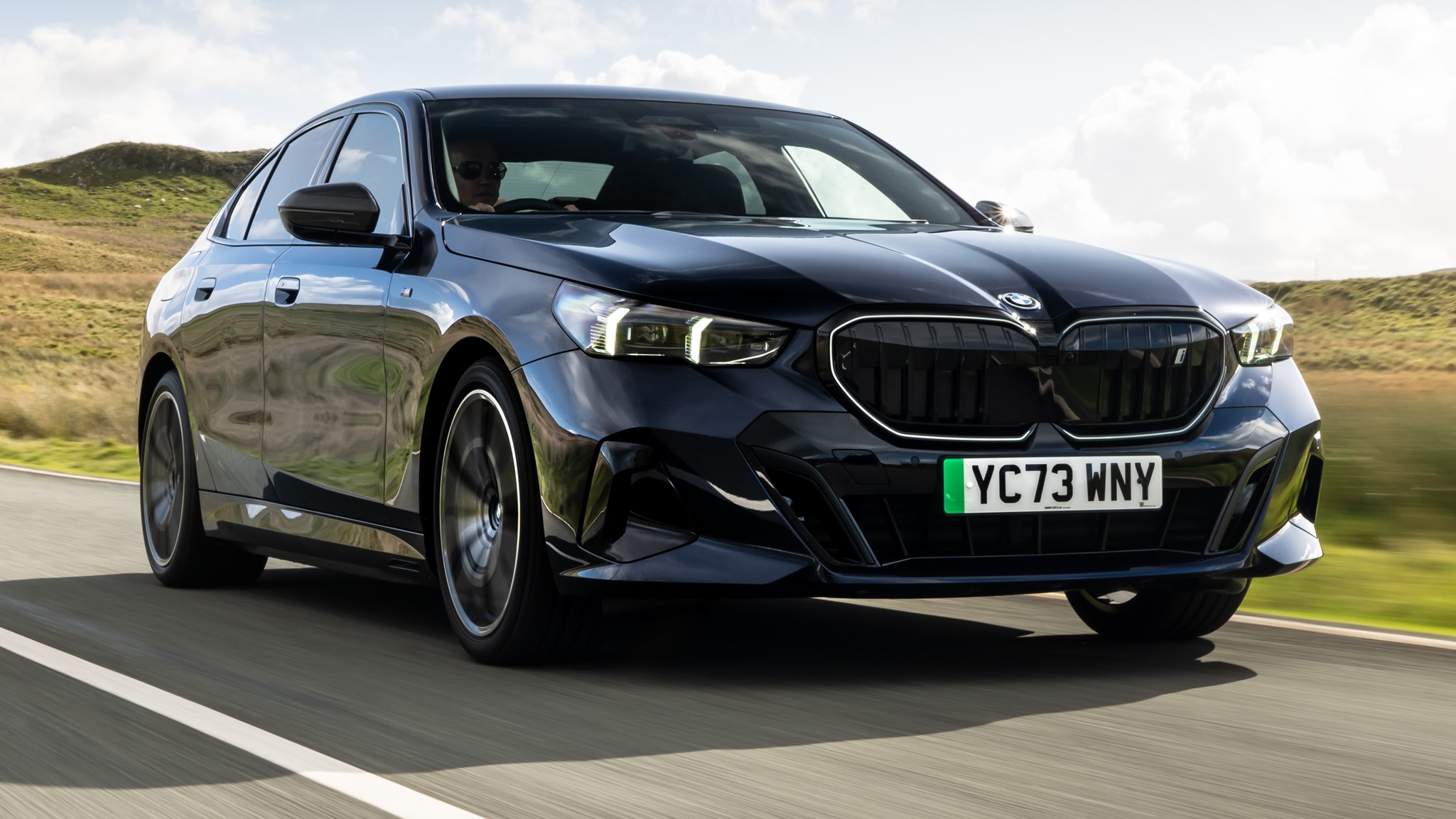
This pure-electric 5 Series has quite the pair of boots to fill. The previous generation 5 Series was one of the most consistently well-reviewed cars on sale – and even though it first hit the market in 2017, it was still one of the nation’s go-to executive saloons by the time it was pulled from the showrooms in 2023. It was that good of an all-rounder.
Having now spent some time with the i5 on UK roads, we’re confident in saying that it’s a worthy successor to its forebear. It also more than a match for the two biggest electric executive saloons on the market today – the Mercedes EQE and Tesla Model S. Scroll down to find out why.
Well? Does it drive like a 5 Series?
Oh yes. We think this is one of the few electric cars available (short of silly electric hypercars) that could get old school petrolheads excited. Most mainstream manufacturers – cough, Stellantis, cough – have sterilised their cars’ steering, braking and suspension systems when they moved onto electric platforms, but BMW has managed to retain a whiff of what made the old 5 Series so great.
The i5’s steering is very communicative for an electric car and the suspension doesn’t completely isolate the occupants from the road. Pass over some rough tarmac and you’ll feel the patter of the gravel in your palms – and when you’re really hustling down a B-road, you can sense the chassis moving around under you it copes with the dips and the camber. It’s a good laugh.
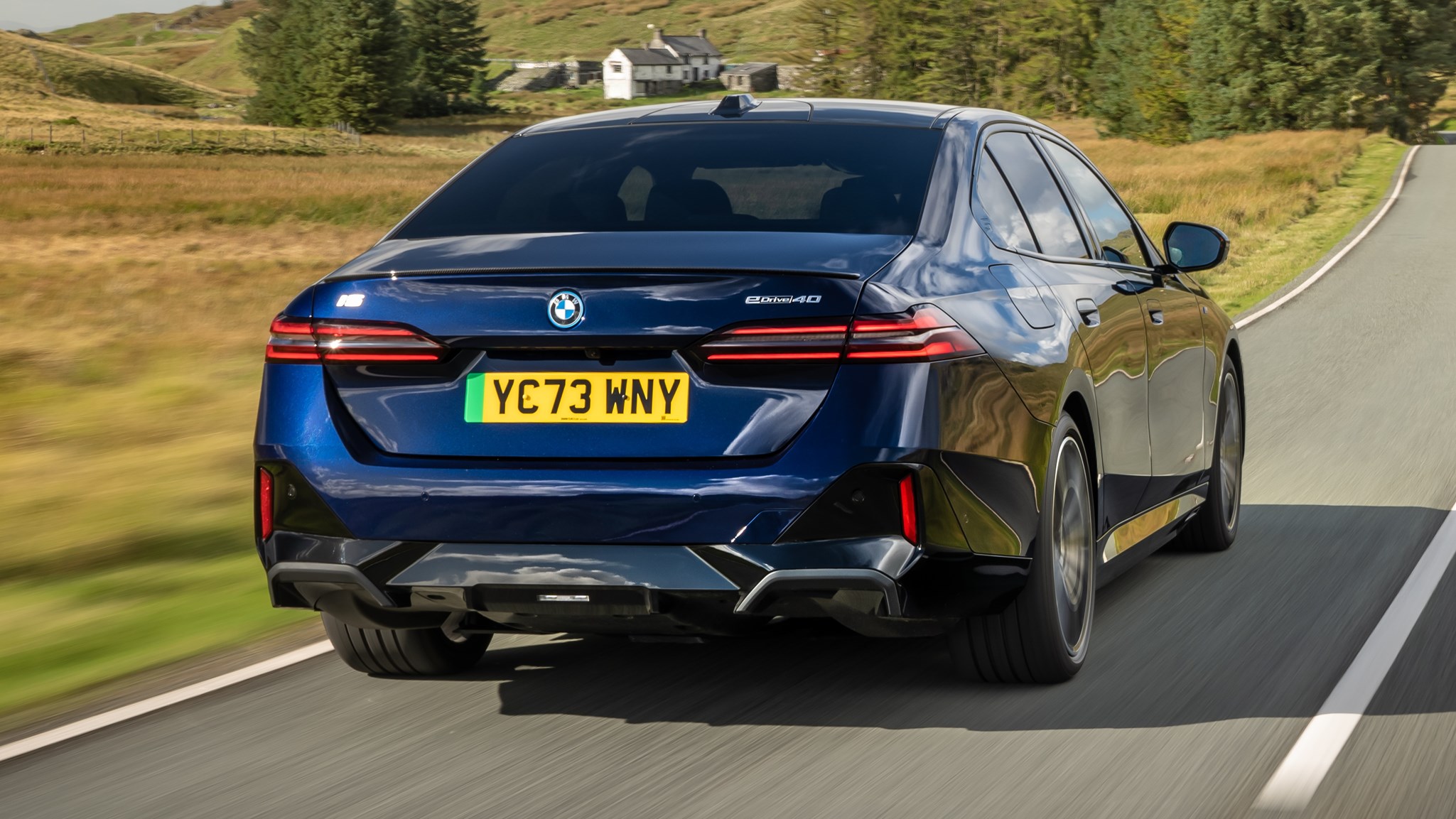
It isn’t quite as involving as the old 5 Series, but it’s light years ahead of its closest competitor, the Mercedes EQE. BMW has even managed to retain the old cars’ yobbish streak – once you’ve found the traction control settings on the infotainment system, you can make the i5 slither around like its rear tyres are coated in agricultural birthing gel.
We were surprised by how well the i5 handles its considerable heft, especially when fitted with BMW’s optional active anti-roll bars. The car feels its weight under braking, but with the chassis set in Sport mode, it stays remarkably upright in the corners. The suspension has been tuned on the firmer side to help control the weight of the electric gubbins, but it’s never uncomfortable and the expensive feeling damping shrugs off most bumps. We undoubtedly prefer it to the floaty EQE.
What are the motors like?
You get two a choice of two electric powertrains, both of which are powered by the same 81.2kWh battery pack. The entry-level eDrive40 has a single electric motor on the rear axle that churns out 335bhp and 295lb ft of torque – enough, says BMW, for a 0–62mph time of six seconds flat.
That means you’ve got just enough poke to nose ahead of a Volkswagen Golf GTI from a standing start, but the hot hatchback will probably make back that lost ground as you keep piling on the speed. The eDrive40’s initial shove starts to wear off as you pass 60mph.
If you demand the sort of performance you got from the old 540i or M550i, you’ll be better served by the i5 M60. You can think of it as the pure-electric equivalent to the old BMW M5. It gains an extra 257bhp electric motor on the front axle, bringing four-wheel drive and boosting output to 593bhp and 605lb ft. However, it’s worth noting that you can only have all that power short bursts by pulling the paddle marked ‘boost’ behind the steering wheel.
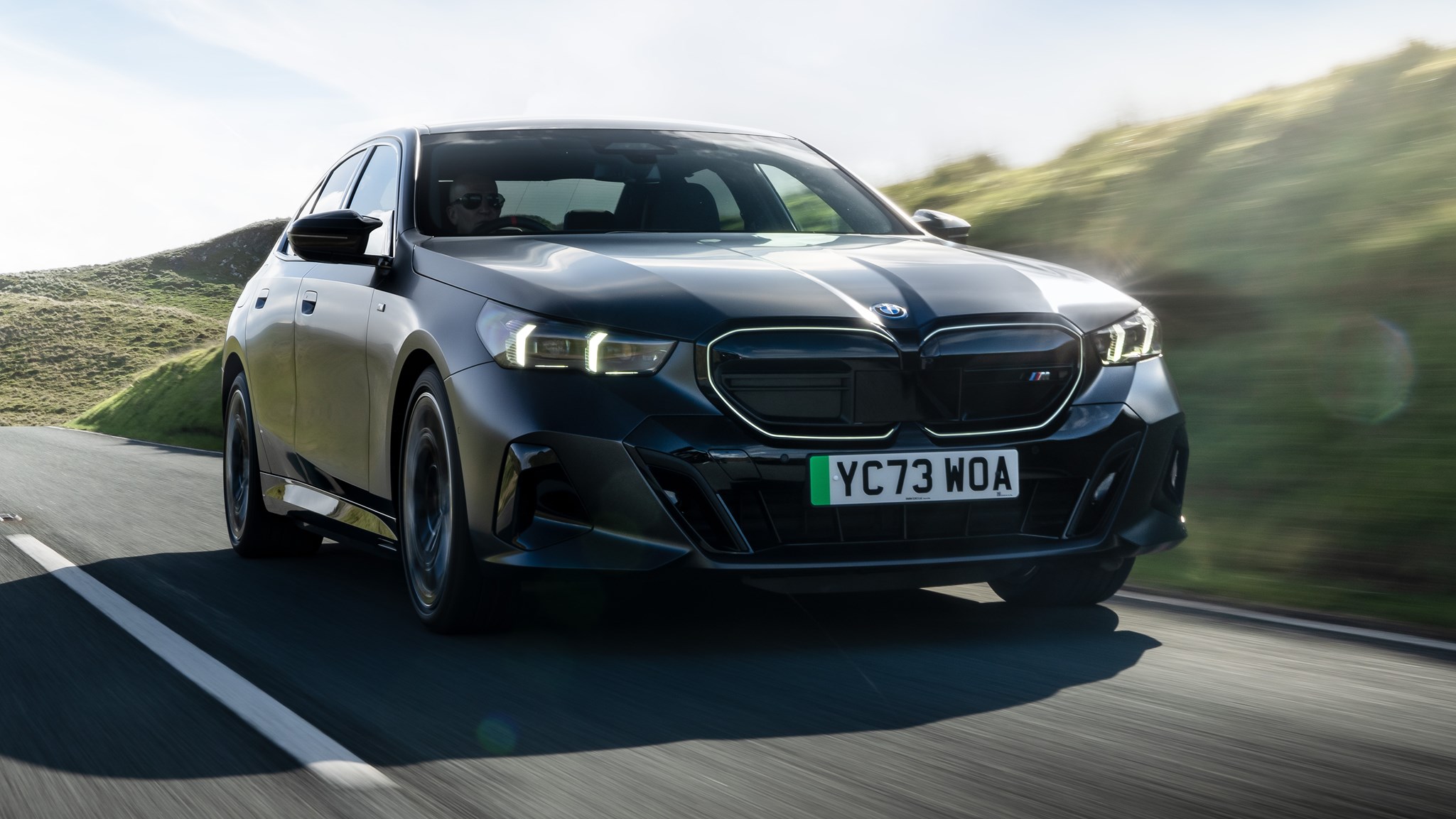
We like that BMW designed it that way, though. It’s uncharacteristically funny for a German car manufacturer. It works like the electric equivalent of silver screen nitrous – pull the paddle and you get 10 seconds of madness, giving you just enough time to scythe past whatever it is you want to overtake and slingshot you down the road in a cloud of eco dust. The M60 is quick from a standing start, too – 0–62mph is over and done with in just 3.8 seconds.
That means the i5 isn’t Tesla Model S Plaid fast – but that isn’t such a bad thing. Yes, the Tesla’s tri-motor powertrain grabs all the headlines with its outrageous 1000bhp+ output, but we found it to be a bit too much for UK roads. There are very few occasions that you can use all those ponies, which somewhat defeats the point of the exercise in our book. The i5’s performance is far more usable.
What’s it like inside?
An awful lot like a miniature BMW i7, which is high praise indeed. Like its limo-shaped sister, the i5 features a 12.3-inch digital gauge cluster and a 14.9-inch infotainment screen, mounted under one curved slab of glass. It’s powered by the latest iteration of BMW’s iDrive system, which retains the company rotary dial on the centre console. It allows you to navigate to any function on the screen and we think it’s far safer and much less distracting than using the touchscreen.
BMW has gone a slightly mad with its minimalist design language, however. Apart from the iDrive dial, there’s a distinct lack of physical controls in the i5. Even the air vents are opened and closed using touch-sensitive sliders, which feels like technology for technology’s sake to us. Happily, BMW designed its infotainment menus intelligently – the icons are well spaced and large enough to hit when you’re bouncing down a hilly back road.
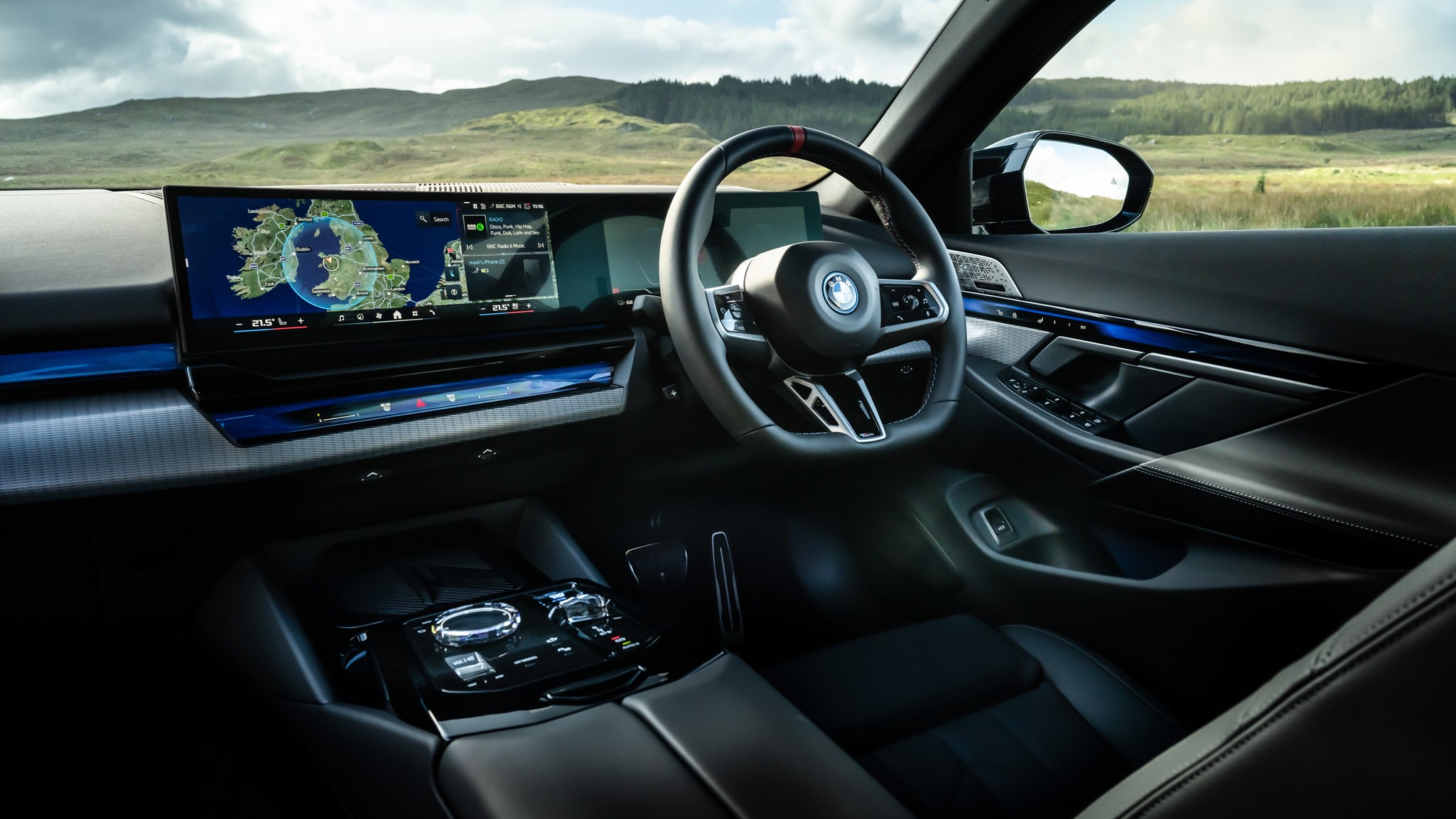
Both the standard and sports seats are excellent, but it’s worth spending a minute playing with the adjustment in the menu before you set off to get totally comfortable. Quality is fantastic, especially compared to the creak box that is the EQE, and space in the back is adequate if not palatial.
BMW also installed a suite of games and video-streaming software to help you pass the time when you’re charging. But if that doesn’t tickle your fancy, you’re more than welcome to continue scrolling through TikTok and scoffing an M&S sandwich like normal.
Tell us about the range and charging
The entry-level eDrive40 has a maximum WLTP claimed range of 357 miles, while the M60 model, on account of its additional electric motor, has a range of 315 miles. However, our experience with previous BMW electric cars (such as the i4 saloon and the iX SUV) tells us their official range figures are a tad optimistic – and it seems the i5 is no exception to the rule.
Real world range for the M60 model seems to be somewhere in the high 200-mile range. To be fair to be BMW, we were testing the i5 in the depths of winter, which is when electric cars are at their least efficient. Still, it’s not quite as good as the easy 300+ miles you can extract from a Tesla Model S.
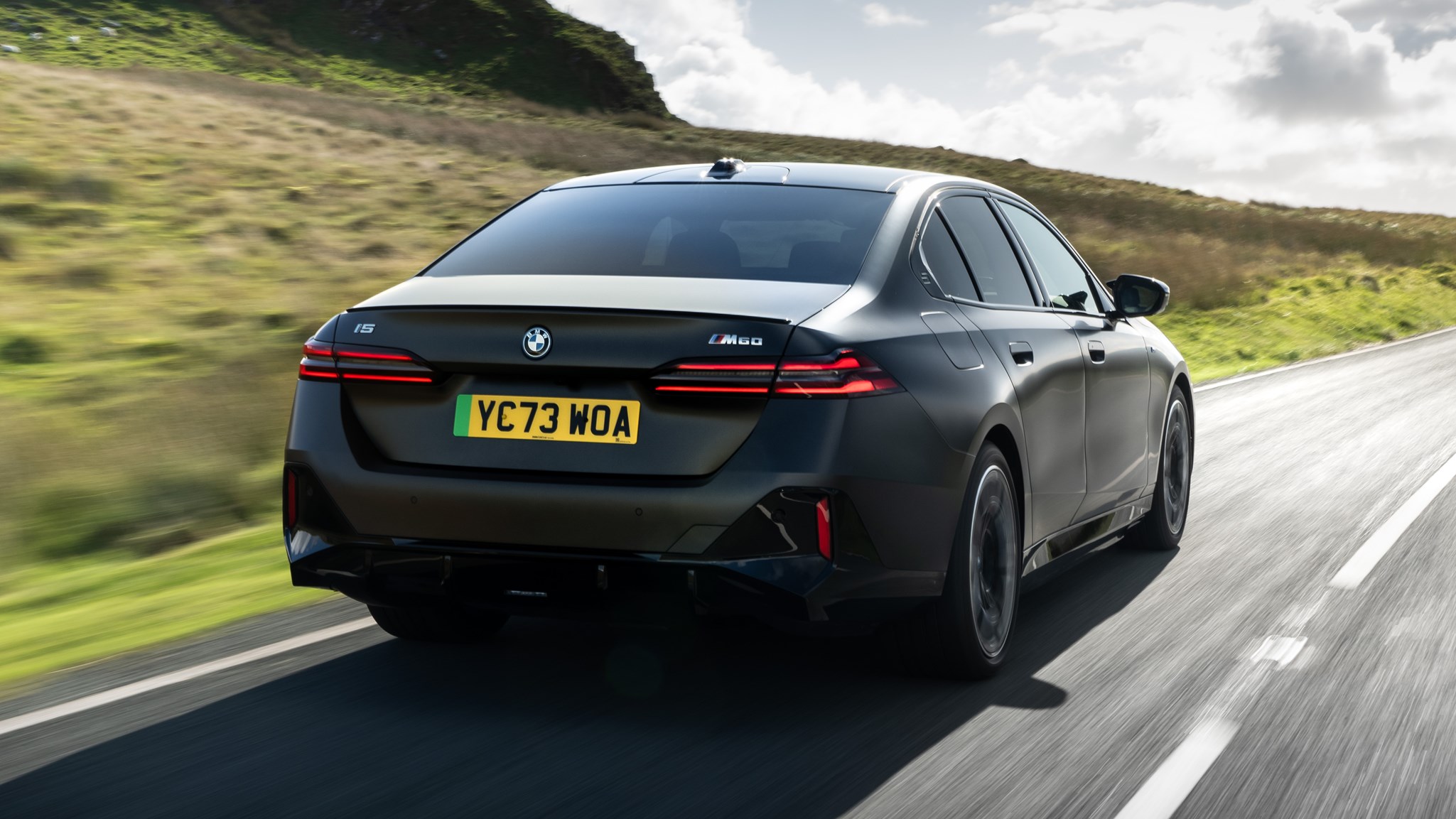
Charge times vary depending on the speed of the charger you hook the i5 to. At a 7.4kW AC wallbox charger, it’ll take around 13 hours to completely recharge the car. Connect the i5 to an 11kW AC feed and you can trim that time down to eight hours and 15 minutes. Find a DC rapid charger that’s capable of kicking out 205kW and you’ll be able to thrash the BMW’s battery from 10–80% capacity in just 30 minutes.
Any clever tech?
Plenty. BMW was very keen to show us its Highway Assistant. It’s a new system that allows hands-off (not eyes-off – consider this your warning) driving. Basically, you act as the car’s supervisor, watching its movements and the traffic around it – and you don’t need to keep your hands on the wheel. You’re free to gesticulate as wildly as you please. What a future we’re in.
The system combines adaptive cruise control with speed limit assist, active lane-keeping aids and an active lane-change assistant. The cruise control works just fine, though its rigid adhesion to the posted speed limit is quite restrictive at times, especially on motorway slip roads.
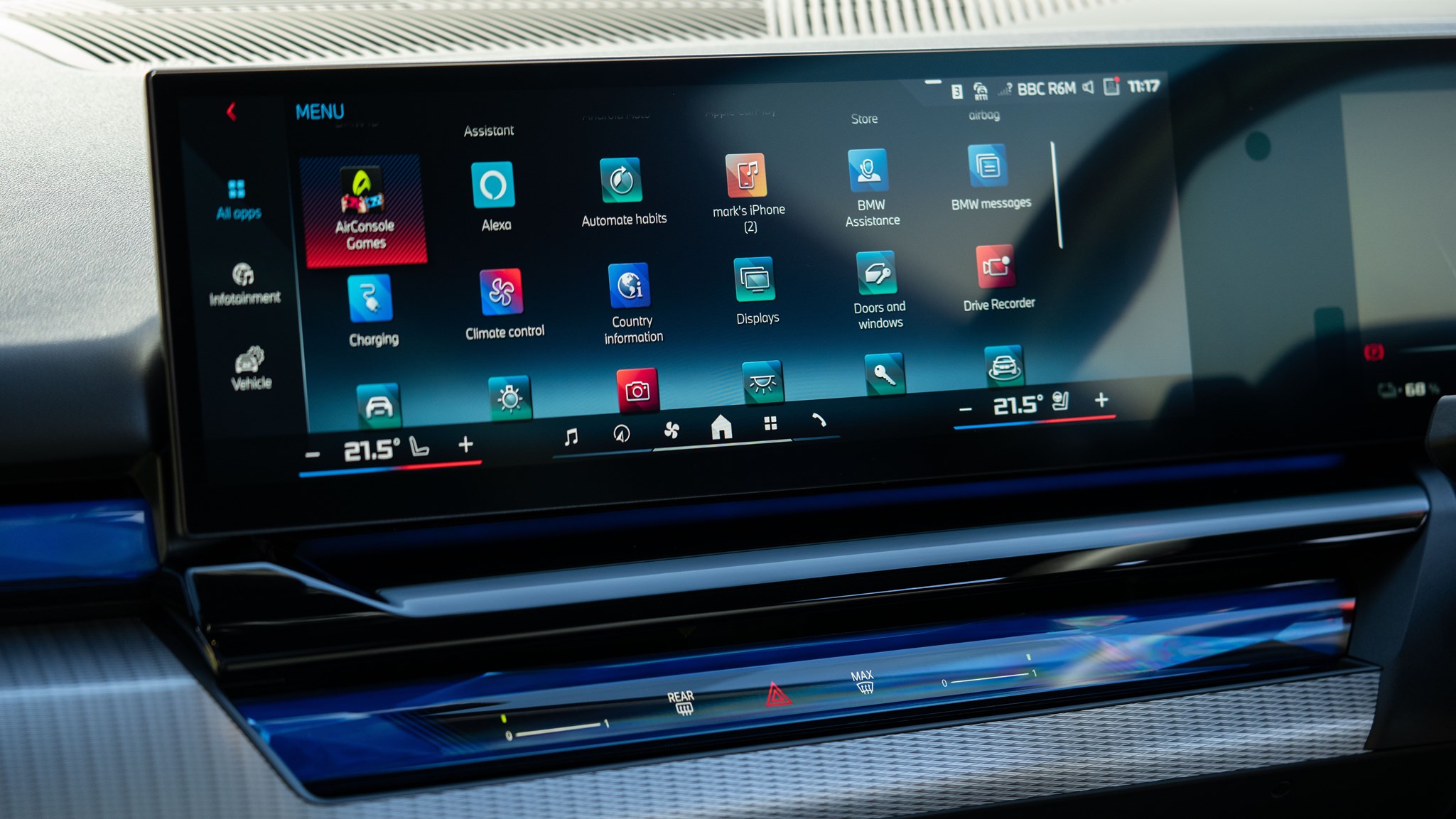
But it’s the lane-changing tech that riles us more. When the car decides it wants to change lanes – to overtake a dawdler in front, for example – you have to confirm the manoeuvre by looking in the corresponding mirror. Cool. Problem is, if you spot something in that mirror that the car’s missed, you’ll have already set the lane change in motion and you’ll have to wrest control away from the car.
BMW also confirmed that the i5 would hog the middle lane by default. You can manually ask it to change back to lane 1 but, left to its own devices, it’ll haplessly pootle down the middle of the motorway ruining everybody else’s day. As if BMW drivers needed another excuse…
Verdict
The BMW i5 is a very accomplished electric executive saloon. It’s far better built and much better to drive than its closest competitor, the Mercedes EQE. It’s also more usable than the Tesla Model S, simply because it has a sensible amount of power and just enough physical controls to feel familiar. Oh, and you can have it in right-hand drive, which is something Tesla has binned off for the Model S.
It is a very expensive car, however. Prices for the eDrive40 model start from around £74,000, while the top-spec M60 variant costs almost £100,000. That’s an awful lot of money for a 5 Series – and we’re not convinced the most basic model is worth the extra £25,000 over the similarly brilliant Kia EV6. You’d need to really love BMW saloons to spend the extra cash.
The Kia EV6 doesn’t drive as well as the i5, though, and its interior isn’t anywhere near as well finished or as loaded with technology. As a practical electric car that’s aimed squarely at driving enthusiasts, the i5 has hit the nail on the head. Right now, its only worthy rival is the sensational Porsche Taycan – and we can’t think of a better accolade than that.